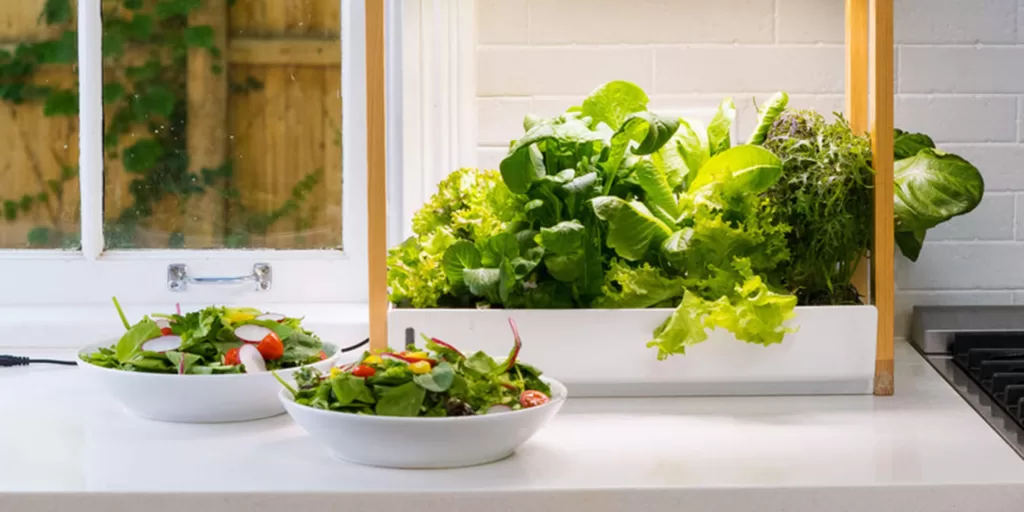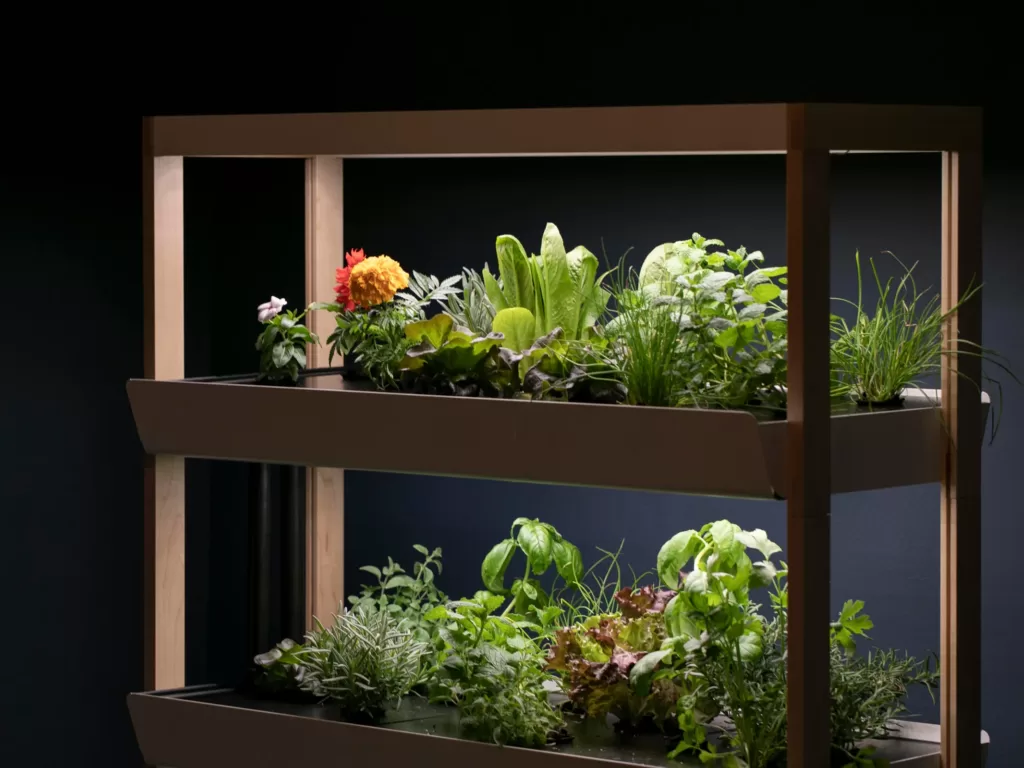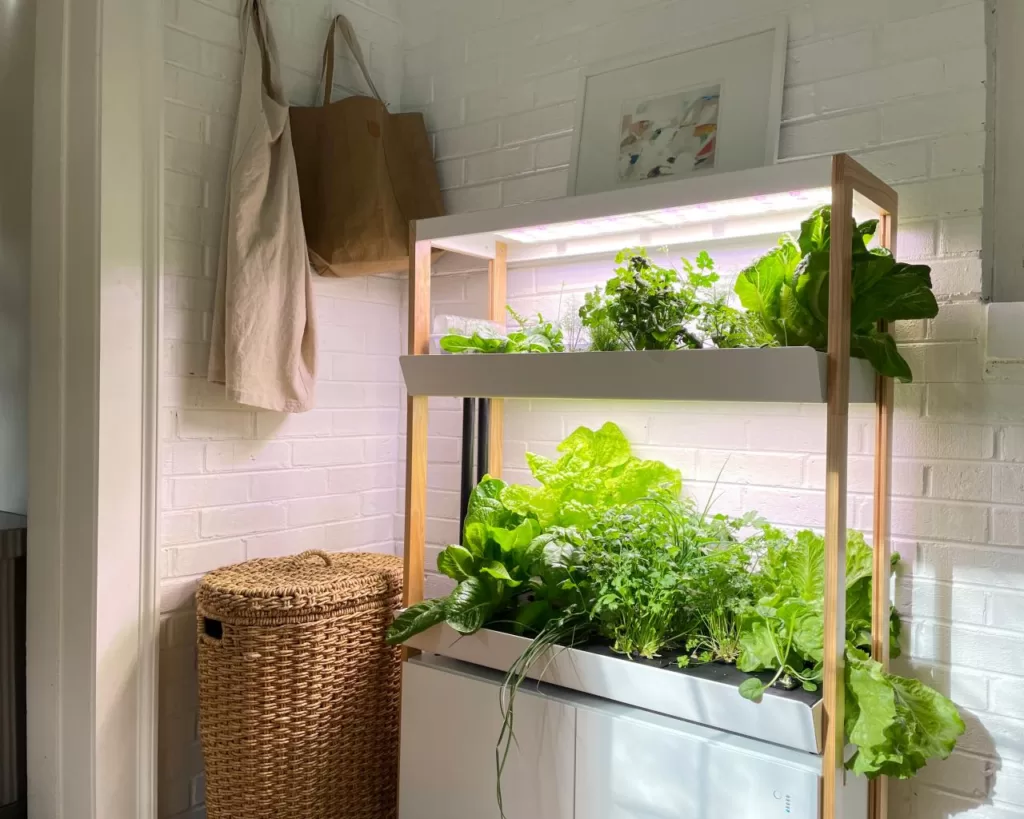Hydroponic gardening has gained popularity in recent years as a convenient and efficient method for growing plants indoors. When it comes to leafy greens, hydroponic systems offer numerous benefits, including faster growth rates, higher yields, and greater control over environmental conditions. In this comprehensive guide, we will explore the world of growing leafy greens in hydroponic systems, providing valuable insights and practical tips for success. Hydroponic gardening is gaining popularity as a modern and efficient way of growing plants. It involves growing plants in a nutrient-rich water solution without the use of soil. Hydroponic systems are ideal for growing leafy greens due to their efficient use of water, controlled environment, and ability to grow crops all year round. In this article, we will explore the benefits of growing leafy greens hydroponically, essential components of a hydroponic system, choosing the right leafy greens for hydroponics, setting up your hydroponic system, nutrient management, environmental factors and maintenance, harvesting and enjoying your leafy greens, resources and further reading, and frequently asked questions.
Benefits of Growing Leafy Greens Hydroponically
Hydroponic gardening offers several advantages for cultivating leafy greens. First and foremost, hydroponic systems enable faster growth rates compared to traditional soil-based methods. This is because plants have direct access to water, nutrients, and oxygen, allowing them to focus on growth rather than searching for resources. Additionally, hydroponics allows for higher yields per square foot of space, making it an efficient choice for urban or limited-space gardens. Furthermore, hydroponic systems reduce the risk of soil-borne pests and diseases, eliminating the need for harmful pesticides and creating a healthier growing environment. Finally, hydroponics enables year-round cultivation, allowing you to enjoy fresh, homegrown greens regardless of the season. Growing leafy greens hydroponically offers numerous benefits. First, hydroponic systems allow for faster growth rates and higher yields compared to traditional soil-based systems. This is because the plants are provided with the exact nutrients they need, resulting in optimal growth conditions. Second, hydroponic systems are water-efficient, using up to 90% less water than traditional soil-based systems. Third, hydroponic systems offer a controlled environment, which means the plants are protected from pests, diseases, and harsh weather conditions. Fourth, hydroponic systems enable year-round cultivation, allowing you to grow leafy greens in any season.
Essential Components of a Hydroponic System
To successfully grow leafy greens in a hydroponic system, you’ll need to understand and assemble the essential components. These include a nutrient solution, a growing medium, water pumps or circulation systems, and appropriate lighting. The nutrient solution serves as the primary source of plant nutrition, and its composition should be tailored to the specific needs of leafy greens. The growing medium provides support for the plants’ root systems and can include options such as perlite, vermiculite, or rockwool. Water pumps or circulation systems ensure the proper delivery of the nutrient solution to the plants, while lighting systems provide the necessary light spectrum for photosynthesis. There are several essential components of a hydroponic system, including nutrient solutions, growing mediums, water pumps, and lighting systems. Nutrient solutions are the foundation of hydroponic systems, providing the necessary nutrients for plant growth. Growing mediums provide support and stability for the plants while holding moisture. Water pumps circulate water and nutrients through the system. Lighting systems provide the necessary light for photosynthesis. Understanding the function of each component is essential to creating a successful hydroponic system.

Choosing the Right Leafy Greens for Hydroponics
Not all leafy greens are equally suitable for hydroponic cultivation. However, many popular varieties thrive in these systems. Lettuce, spinach, kale, and Swiss chard are among the most commonly grown leafy greens in hydroponics. Each variety has specific growth requirements, including ideal pH levels, nutrient concentrations, and temperature ranges. Understanding these requirements is crucial for providing the optimal growing conditions. By selecting the right leafy greens for your hydroponic garden, you can ensure successful and abundant harvests. Some popular leafy greens that thrive in hydroponic systems include lettuce, spinach, kale, and Swiss chard. These plants require specific pH levels, nutrient concentrations, and temperature ranges to thrive. When choosing your leafy greens, it’s important to consider the specific requirements of each plant to ensure optimal growth conditions.
Setting Up Your Hydroponic System
Setting up a hydroponic system for growing leafy greens requires careful planning and attention to detail. Begin by selecting the appropriate system type based on factors such as available space, budget, and personal preference. Popular hydroponic techniques for leafy greens include nutrient film technique (NFT), deep water culture (DWC), and vertical systems. Once you’ve chosen a system, prepare the growing containers, mix the nutrient solution according to the specific requirements of your chosen leafy greens, and set up the water circulation and lighting systems. Finally, adjust the environmental conditions, including temperature and humidity, to create an optimal growing environment for your leafy greens. Setting up a hydroponic system for leafy greens involves several steps, including selecting the right system type, preparing the growing containers, mixing nutrient solutions, and adjusting environmental conditions. There are several types of hydroponic systems, such as nutrient film technique and deep water culture. Each system has its own set of advantages and disadvantages, and it’s important to choose the one that works best for your specific needs.
Nutrient Management for Leafy Greens in Hydroponics
Proper nutrient management is essential for healthy leafy green growth in hydroponic systems. Leafy greens have specific nutrient requirements, including nitrogen, phosphorus, potassium, and micronutrients. Monitoring and adjusting the nutrient solution’s pH and nutrient levels are crucial for preventing deficiencies or toxicities. Regularly test the nutrient solution and make adjustments as needed. Maintaining proper nutrient balance is critical to healthy leafy green growth in hydroponic systems. Essential nutrients include nitrogen, phosphorus, potassium, calcium, and magnesium. Nutrient deficiencies and excesses can lead to poor growth and yield. It’s important to monitor and adjust nutrient levels regularly to ensure optimal growth conditions.
Environmental Factors and Maintenance
Environmental factors such as lighting, temperature, humidity, and airflow can significantly impact leafy green growth in hydroponic systems. Creating an optimal growing environment involves balancing these factors to provide optimal growth conditions. Maintenance tasks such as pruning, pest control, and water quality management are also critical to maintaining healthy plants.
Harvesting and Enjoying Your Leafy Greens
Knowing when and how to harvest your leafy greens is essential to achieving optimal flavor and nutrition. Proper harvesting techniques, post-harvest handling. Once your leafy greens have reached maturity, it’s time to harvest and enjoy the fruits of your labor. Here are some guidelines to follow:
- Harvesting Techniques: When harvesting leafy greens, it’s best to cut the outer leaves while leaving the inner ones to continue growing. This allows for a continuous harvest over an extended period. Use clean and sharp scissors or a knife to make clean cuts near the base of the plant.
- Post-Harvest Handling: After harvesting, gently wash the leafy greens to remove any dirt or debris. It’s important to handle them with care to avoid bruising or damaging the leaves. Pat them dry or use a salad spinner to remove excess moisture.
- Storage Recommendations: Leafy greens are best consumed fresh, but if you need to store them, ensure proper storage conditions. Place the cleaned and dried greens in a breathable container or plastic bag with a paper towel to absorb excess moisture. Store them in the refrigerator’s vegetable compartment or a cool place to maintain freshness. Use them within a few days for the best quality.
Growing leafy greens in hydroponic systems offers numerous benefits, including faster growth, higher yields, and controlled environments. By following the steps outlined in this guide, you can successfully cultivate a variety of leafy greens in your hydroponic garden. Remember to choose the right leafy greens for hydroponics, set up a proper hydroponic system, manage nutrient levels, consider environmental factors, and practice proper harvesting techniques. With dedication and attention to detail, you can enjoy a continuous supply of fresh and nutritious leafy greens throughout the year.

Resources and Further Reading
If you’re looking to dive deeper into hydroponic gardening and growing leafy greens, here are some recommended resources for further reading:
- Books:
- “The Vegetable Gardener’s Guide to Permaculture: Creating an Edible Ecosystem” by Christopher Shein
- “Hydroponics: A Practical Guide for the Soilless Grower” by J. Benton Jones Jr.
- “The Hydroponic Garden: A Start-up Guide to a Successful Home Hydroponic System” by J.F. Foster
- Websites:
- Hydroponics Simplified (www.hydroponicsimplified.com)
- Maximum Yield (www.maximumyield.com)
- Gardening Know How (www.gardeningknowhow.com)
- Online Communities:
- Reddit: r/Hydroponics
- Hydroponics Forum: www.hydroponicsforum.co.uk
- The Growing Edge: www.thegrowingedge.com/forum
These resources provide valuable insights, tips, and discussions from experienced hydroponic gardeners, allowing you to expand your knowledge and refine your skills in growing leafy greens hydroponically.
Frequently Asked Questions (FAQs)
Can I use tap water for my hydroponic system?
Tap water can be used in hydroponic systems, but it’s important to check its quality first. Some tap water contains high levels of minerals or chlorine, which can affect plant health. Consider using filtered or dechlorinated water to ensure optimal conditions for your leafy greens.
How often should I change the nutrient solution in my hydroponic system?
It’s recommended to change the nutrient solution every two to three weeks or when the nutrient levels become unbalanced. Regular monitoring of pH and nutrient levels will help determine when a change is needed.
Can I grow leafy greens indoors without natural sunlight?
Yes, you can. Leafy greens can be grown successfully under artificial lighting, such as LED or fluorescent lights. Make sure to provide the appropriate light intensity and duration based on the specific requirements of the leafy greens you are growing. Supplemental lighting can be used to mimic natural sunlight and promote healthy growth.
How can I prevent pests and diseases in my hydroponic system?
One of the advantages of hydroponic systems is the reduced risk of pests and diseases compared to soil-based gardening. However, it’s still important to take preventive measures. Maintain a clean and sterile environment, regularly inspect plants for signs of pests or diseases, and promptly address any issues that arise. Integrated pest management techniques, such as introducing beneficial insects or using organic pest control methods, can be effective in preventing and managing pests in hydroponics.
Can I reuse the growing medium in my hydroponic system?
It depends on the type of growing medium you are using. Some growing mediums, such as coconut coir or rockwool, can be reused after sterilization and proper cleaning. Others, like perlite or vermiculite, are typically single-use and should be replaced with each crop cycle. Refer to the manufacturer’s recommendations for specific guidance on reusing growing mediums.

Are hydroponically grown leafy greens as nutritious as those grown in soil?
Yes, hydroponically grown leafy greens can be just as nutritious as those grown in soil. The nutrient-rich solution provided in hydroponic systems allows plants to absorb the necessary minerals for healthy growth. However, it’s important to ensure the proper nutrient balance and monitor nutrient levels to avoid deficiencies or excesses that could impact the nutritional quality of the greens.
By addressing these frequently asked questions, you can gain a better understanding of common concerns and challenges related to growing leafy greens in hydroponic systems.
In conclusion, growing leafy greens in hydroponic systems is a rewarding and efficient way to enjoy fresh and nutritious greens throughout the year. By following the comprehensive guide outlined in this article, you can set up and maintain a successful hydroponic garden for growing a variety of leafy greens. Remember to consider the benefits of hydroponic gardening, understand the essential components of a hydroponic system, choose the right leafy greens for hydroponics, set up your system properly, manage nutrients and environmental factors, and enjoy the process of harvesting and savoring your homegrown leafy greens. With proper knowledge, care, and experimentation, you can become a skilled hydroponic gardener and reap the many rewards of this innovative gardening method.
Resources:
- Shein, C. (2017). The Vegetable Gardener’s Guide to Permaculture: Creating an Edible Ecosystem.
- Jones Jr., J. B. (2012). Hydroponics: A Practical Guide for the Soilless Grower.
- Foster, J. F. (2019). The Hydroponic Garden: A Start-up Guide to a Successful Home Hydroponic System.
- Hydroponics Simplified: www.hydroponicsimplified.com
- Maximum Yield: www.maximumyield.com
- Gardening Know How: www.gardeningknowhow.com
- Reddit: r/Hydroponics
- Hydroponics Forum: www.hydroponicsforum.co.uk
- The Growing Edge: www.thegrowingedge.com/forum
How often should I change the nutrient solution in my hydroponic system?
It is recommended to change the nutrient solution in your hydroponic system every 1-2 weeks. As plants absorb nutrients from the solution, the nutrient levels may decrease over time. Regularly monitoring the pH and nutrient levels and adjusting them accordingly will help ensure that your leafy greens receive the proper nutrients for healthy growth.
Can I grow organic leafy greens in a hydroponic system?
Yes, it is possible to grow organic leafy greens in a hydroponic system. Organic hydroponics involves using organic nutrient solutions and following organic cultivation practices, such as using organic pest control methods and organic-approved growing mediums. However, it is important to note that organic certification standards can vary, so it’s advisable to check with your local organic certification agency for specific guidelines and requirements.
How long does it take for leafy greens to mature in a hydroponic system?
The time it takes for leafy greens to mature in a hydroponic system varies depending on the specific variety and environmental conditions. On average, most leafy greens can be harvested within 3-6 weeks after planting. However, it’s important to refer to the seed packet or plant label for specific information on the expected maturity time for the particular leafy green variety you are growing.
Can I grow leafy greens hydroponically without artificial lighting?
While it is possible to grow leafy greens hydroponically without artificial lighting, it may not be ideal, especially if you don’t have access to ample natural sunlight. Leafy greens require a minimum of 6-8 hours of light per day to thrive. If you don’t have sufficient natural light, supplementing with artificial lighting, such as fluorescent or LED grow lights, is recommended to provide the necessary light intensity and duration for optimal growth.
By addressing these additional frequently asked questions, you can further enhance your knowledge and understanding of growing leafy greens in hydroponic systems. Remember, as you embark on your hydroponic gardening journey, always stay curious, be open to experimentation, and continue learning from reputable sources to refine your skills and maximize the success of your leafy green crops.
Growing leafy greens in hydroponic systems offers numerous advantages, from faster growth rates and higher yields to reduced risks of pests and diseases. By understanding the benefits of hydroponic gardening, selecting the right leafy greens, setting up a suitable hydroponic system, managing nutrients and environmental factors, and addressing common concerns, you can successfully cultivate a wide variety of fresh and nutritious leafy greens year-round. Remember to consult reputable resources, stay engaged in hydroponic communities, and continue to expand your knowledge and skills in this exciting and innovative form of gardening. Enjoy the journey of growing your own healthy and delicious leafy greens






